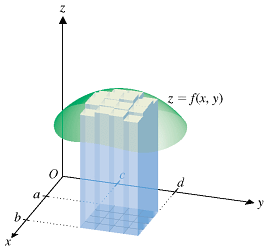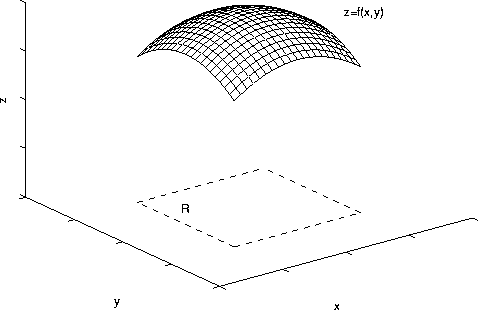Double Integration
Single Integration
In single integration, we essentially added all of the y-values for every x-value in a set domain. Back then, the definition of an integral on [a,b] was the limit of a Riemann sum:
Inner Partitions
In double integration, we do something where we split a region up into many squares, and we sum up the volumes of the prisms made from the squares. Now, we add up all of the z-values for every square created by the point (x,y).
To actually calculate a double integral, the area of the partitions approaches zero.
Evaluation
Before we start, we have to define the two types of regions.
Type 1
This is "normal", or at least more familiar. This is when the y's are bound by two functions f(x) and g(x) and the x's are bound between constants.
Type 2
This is inverted. This means the x's are bound by two functions f(y) and g(y), and the y's are bound between constants.






